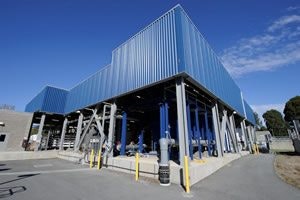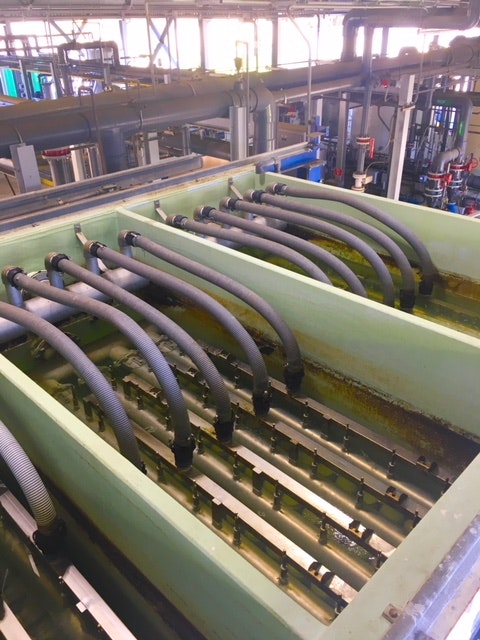Reclamation Plant
Overview

On an average day about 90% of the water that comes into the CAWD wastewater treatment plant is reclaimed and sent to Pebble Beach golf courses for irrigation. CAWD owns the Reclamation Treatment Facility which is a part of a larger project including storage and conveyance infrastructure that was created in partnership with the Pebble Beach Community Services District (PBCSD), and the Monterey Peninsula Water Management District (MPWMD). Collectively the Reclamation Project offsets about 1,000 acre feet per year of potable water that would otherwise be drawn from the Carmel River aquifer. This 1,000 acre feet per year is an important part of the water supply portfolio for the greater Monterey Peninsula, Seaside, and Carmel Area. For reference, the total annual water taken from the Carmel River is about 6,000 acre feet per year.
The original reclamation plant, constructed in 1994, consisted of a large storage basin, and a sand filtration process to remove fine particulates from the water to meet California recycled water treatment requirements.
In 2008 a more advanced treatment facility was added to treat the water to an even higher quality. The new facility contains microfiltration (MF) and reverse osmosis (RO) membranes to filter out dissolved ions (salts) from the water.
The MF/RO system has a capacity to produce 1.5 million gallons per day (MGD) of recycled wastewater. Based on current average flows, the average output of reclaimed water is about 1.0 MGD.
Microfiltration (MF)

Microfiltration membranes filter very small particles out of the water (smaller than the diameter of a human hair). The membranes can physically block individual microorganisms such as bacteria from passing through.
Due to the small pore sizes in the membranes the microfiltration membranes provide a slightly better product than traditional filters such as sand filters. The microfiltration provides pre-filtration prior to the water being sent to the Reverse Osmosis System to remove dissolved ions.
The microfiltration membranes are submerged in a basin that is filled with the treated water from the wastewater treatment plant. The water is pulled through thousands of small straw-like membranes with microscopic pores to filter the water. The dirty water is left in the basin to be backwashed and removed to the solids treatment process in the wastewater treatment plant.
Reverse Osmosis (RO)

Reverse osmosis membranes physically remove even smaller particles than MF. The RO membranes remove ions at the atomic level (i.e. ions dissolved in the water). This also provides physical removal of viruses in addition to further removal of bacteria in the water.
The water that does not pass through the RO membranes becomes a concentrated brine that contains all of the dissolved ions, and cells that are rejected by the membranes. This brine is disinfected and dechlorinated to deactivate and kill viruses and bacteria before the water is sent to the ocean outfall for disposal.
Disinfection

Similar to drinking water the state requires that recycled water be disinfected prior to distribution, and that a chlorine residual be maintained in the distribution system to mitigate regrowth of harmful bacteria in the piping.
CAWD utilizes sodium hypochlorite and aqueous ammonia to create chloramines for disinfection and to maintain a disinfectant residual in the distribution system. Chloramines are also commonly used in drinking water systems because they have less carcinogen developing properties than does free chlorine.
Conveyance

CAWD pumps the water from the treatment plant to Pebble Beach using vertical turbine pumps. The water must travel about 5 miles and up in elevation about 250 feet to get to the Pebble Beach storage infrastructure.
